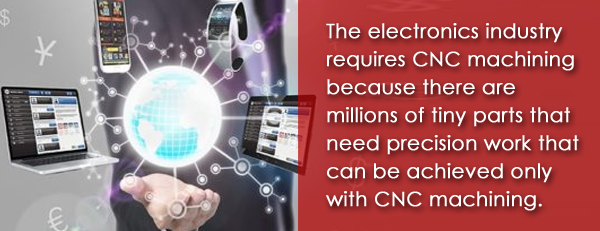Every machinist knows about precision machining or has used it to manufacture ideal machined parts. Precision machining has changed the way industries are working, and it is the right choice for high-volume requirements.
Precision machining helps the machine shops to stay competitive in the market despite the high demand from the customer. If your machine shop is yet to include precision CNC machining in the manufacturing process, then you are missing out a lot.
Our experts at MDA will share the benefits of using precision CNC machining that will help to manufacture your next machined part.
Why is precision machining necessary?
Precision CNC machining is a process where large pieces of materials or parts are shaped into precise forms to meet the specific demands of various industries. Precision CNC machining is finding more relevance in business. In aerospace, it manufactures landing gear parts, manifolds, etc. The medical industry manufactures implants, orthotic devices and other precision instruments via precision machining. So, if a product contains equipment, then it requires precision CNC machining. Here are some reasons why precision machining is necessary:
- It improves smooth functionality and operation.
- Accurate measurement of precise parts.
- Precision machining provides durability.
- Conforming to industry standards.
Benefits of precision CNC machining
#1. Fast production of materials and parts
Precision machining is fast and one of the best manufacturing methods available right now. It reduces the manual work by relying on specialized software to create the custom part you need.
It is better than the conventional CNC machining method, which takes around weeks or months to finalize a custom part. In precision machining, you can manufacture a part in days. See the difference? It saves you time, in the long run, helping you to meet the deadlines. Our experts follow the precision machining techniques reducing the human intervention making the parts consistent for low – mid-volume production.
#2. It is cost effective
Fast production of the machined parts leads to a reduction in overall costs. That’s not all. Precision CNC machining helps to reduce the price you need for raw materials and supply chain management. The machine shops now can produce the machined parts in saving on costs and other factors like:
- Reduction in labour
- Increased manufacturing
- Meeting with the delivery rates
Investing in precision machining allows for maximizing the company’s business. When you choose us for the precision CNC machining needs, you will save a lot on your manufacturing costs.
#3. Precision machining is ideal for prototyping
Prototyping is crucial in the manufacturing process. Prototyping allows the machine shop owners to overcome the mistakes in the long run. Precision CNC machining offers rapid prototyping capabilities and helps businesses to tap the smaller markets. The precision CNC machining allows the prototypes to have more functional parts rather than design prototypes.
| | Also Read: Why Precision Machining Is The Right Choice For High-Volume Requirements |
#4. Compatible with a wide range of materials
Different materials present challenges for manufacturers during the machining process. We all know that to manufacture machined parts for various industries, machine shop owners need to use a range of materials, from titanium to steel to aluminum or copper.
Precision CNC machining is compatible with a lot of materials. There would be no need for the machinist to choose a different manufacturing process as precision machining can do it all. At MDA, our professional experts keep this in mind and manufacture the machined parts in the specific material selected by the client.
#5. Maximizes efficiency
Precision machining is helpful for fast production, as mentioned in point 1. It also allows the machine shop owners to scale up the production needs. The reason is precision machining can create thousands of precision machined parts in no time. Professional machine shop owners can use the manual workforce in other tasks which require more human touch as customer service or post-production.
#6. Safer production
Because the industry is transitioning from manual to automated technology machinery, making it difficult for humans to participate in the manufacturing process. Even though the workforce on the shop floor gets reduced, CNC machine shops will still require skilled employees to be present at the time of production and provide the correct inputs to the machines.
It benefits a business because it reduces the amount of machinery that needs to be maintained and the number of labourers required to run operations. The overall cost of manufacturing a unit will be lower, and profit margins will increase.
Why choose MDA for precision CNC machining?
We are a leading precision company located in Canada. Using advanced manufacturing equipment, our expert engineers and technicians assist businesses in producing high-quality and precise parts. Our production facilities are ISO 9001:2015 certified for quality, and we have a team of quality control experts on staff.







